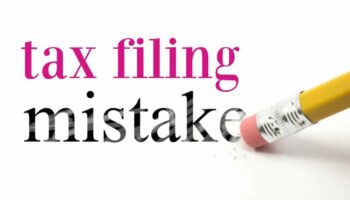As we approach the season of generosity, it is common for most people to dip more into their pockets to support their favorite charities this coming Holiday season. Some will be playing catch up on their annual charitable donations while others will be looking to go far above their usual annual donations. As is typical, most will generally do this without much planning as they are often eager to support the various needs around their communities and around the globe.
It is not uncommon to see regular middle class income families give $5,000, $10,000, $20,000 or more in annual charitable donations to their favorite charities each year. These donations go a long way to make an impact in our communities and provide tangible benefits to those in need.
What if you could multiply those benefits with the same amount you are giving today? What if you could multiply the tax savings? What additional impact will this have on your favorite charities? What impact will this have on your legacy?
The good news is, we can in fact maximize our giving and multiply the impact of our donations to the charities we support and at the same time, minimize taxes. This is possible through the use of tax-exempt life insurance. Of the four tax-free options that our tax law permits, the use of tax-exempt life insurance is one of the less known tax strategies. You’re likely familiar with the other three options – 1) Principal Residence; 2) Tax-Free Savings Account (TFSA); and 3) Lottery Winnings. With the exception of lottery winnings, we do have some control over the use of these tax-free options to save on taxes.
If you own a home that is considered as your principal residence, on the sale of your home, you pay no taxes on the capital gains, if any. Similarly, funds invested in TFSA grow tax-free. Proceeds from lottery winnings are also exempt from taxes. Most people are familiar with these tax-free options and regularly take advantage of them as part of their tax planning. So why is the use of tax-exempt life insurance not as common? There may be a few reasons:
1. Lack of Knowledge: This is probably one of the biggest reasons why people don’t consider life insurance as a tax planning tool or even as a tool to protect the financial welfare of their loved ones. There is so much misinformation about insurance and in the midst of this kind of information, it’s challenging for most to see the real benefits of having insurance as great financial and tax planning tool.
2. Insurance is expensive: Truth be told, insurance is expensive, particularly, the kind of life insurance (whole life and universal life) that is suitable for tax planning purposes. With the ever growing costs of keeping up and managing family budgets to pay for things like food, clothing, housing, day care, car payments, kids’ education, etc., insurance is just outside of those “necessities” when money is tight.
3. Insurance provided through your job: Many people are offered life insurance as part of their employee benefit package and often, decide not to get additional insurance. They forget that coverage provided by these kind of employer-provided insurance is often not sufficient. In addition, if you leave the job, it’s typically the type of insurance that doesn’t “move on” with you.
4. Life insurance – it’s on my list…eventually: There’s no deadline on life insurance, no mandate from the government on purchasing it. Your parents may have never talked to you about its importance, and it’s certainly not the most invigorating topic for conversation. As a result, most never get to it.
Next week, we will be sharing additional information on this topic and we invite you to join us for a live event on Wednesday, December 5th from 6:30 PM in Mississauga. You can register for this event here.
Learn how you can multiply your current $5,000, $10,000 or $20,000 in annual charitable donation to hundreds of thousands of dollars of impact to your favorite charity through the use of tax-exempt life insurance.
In addition to the benefits that the use of tax-exempt life insurance provides for charities, it has similar significant benefits for families as a tool to minimize estate taxes and transfer wealth to the next generation.







The online financial Robot is your key to success.
Link – – https://tinyurl.com/y7t5j7yc
Find out about the fastest way for a financial independence.
Link – https://tinyurl.com/y7t5j7yc
Make your laptop a financial instrument with this program.
Link – https://tinyurl.com/y7t5j7yc
Your computer can bring you additional income if you use this Robot.
Link – https://tinyurl.com/y7t5j7yc
онлайн казино casino x
зеркало casino x казино х
http://grandturizm.ru
Make thousands of bucks. Financial robot will help you to do it!
Link – https://tinyurl.com/y7t5j7yc
Launch the best investment instrument to start making money today.
Link – – https://tinyurl.com/y7t5j7yc
Magzhan Kenesbai investments into Private Equity
Magzhan Kenesbai investments into Venture Capital
отзывы surfe.be
отзывы surfe.be
We know how to become rich and do you?
Link – https://tinyurl.com/y7t5j7yc
Need money? The financial robot is your solution.
Link – https://tinyurl.com/y7t5j7yc
игры казино х
казино х мобильная зеркало
азино777 официальный вход
азино 777 зеркала на сегодня
онлайн казино фараон бонусы
казино фараон играть на деньги россия
vulcan slots зеркало
вулкан slots мобильная версия
вулкан slots игровые автоматы
вулкан slots официальный сайт
Hazardous: Booger In Nose Funny Saying Infant Snapsuit Baby Romper Snapsuit
Bachmann Trains HO Scale Thomas & Friends S.C. Ruffey Train
where can i buy cbd oil near me: cbd oil for sale – what is cbd
Светодиодные светильники
Personalized Reversible Silver Sequin Shark Pillow – 16×16
OXO Tot Perfect Pull Wipes Dispenser, Navy
Need cash? Launch this robot and see what it can.
Link – https://tinyurl.com/y7t5j7yc
Financial robot is a great way to manage and increase your income.
Link – https://tinyurl.com/y7t5j7yc
index https://hydra20original.com
Make money online, staying at home this cold winter.
Link – https://tinyurl.com/y7t5j7yc
Even a child knows how to make $100 today with the help of this robot.
Link – https://plbtc.page.link/zXbp
No need to work anymore while you have the Robot launched!
Link – – https://tinyurl.com/y7t5j7yc
azino777 бонус 777 рублей без депозита
азино 777 вход зеркало на сегодня
Your computer can bring you additional income if you use this Robot.
Link – https://tinyurl.com/y7t5j7yc
vulcan slots зеркало
vulcan slots зеркало
казино x зеркало на сегодня
код казино икс
azino777 бонус без депозита
азино777 официальный сайт скачать
казино фараон слот россия
не открывается казино фараон